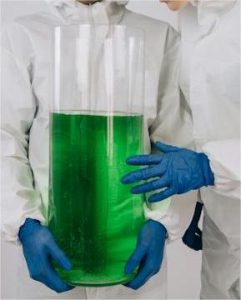Acid dyes refer to dye molecules containing acidic groups, also known as anionic dyes, which can be combined with amino groups in protein fiber molecules through ionic bonds and are suitable under acidic, weakly acidic or neutral conditions. Mainly azo and anthraquinone structures, a few are aromatic methane structures. Dyes and colors are generally compounds that have their own color and can make other substances obtain bright and firm colors in a molecular or dispersed state.

Introduction #
Acid dyes have a complete chromatogram and bright colors. The light fastness and wet processing fastness vary greatly with different dye varieties. Compared with direct dyes, acid dyes have a simple structure and lack long conjugated double bonds and a co-planar structure. Therefore, they lack directness to cellulose fibers and cannot be used for dyeing cellulose fibers. Different types of acid dyes have different dyeing properties due to different molecular structures, and the dyeing methods used are also different.
Classification #
Acid dyes are divided into strong acid, weak acid, acid medium, acid complex dye, etc. according to their chemical structure and dyeing conditions.
Strong acid dye #
The earliest developed acid dye requires dyeing in a strong acid dye bath. Its molecular structure is simple, its molecular weight is low, it contains sulfonic acid groups or carboxyl groups, and it has little affinity for wool. It can move evenly on wool and dye it. It is evenly dyed, so it is also called acid leveling dye, but the shade is not deep, the washing fastness is poor, and the wool is damaged during dyeing, and the wool after dyeing has a poor feel. Such as acid red G (ie CI acid red 1).
Weak acid dye #
In strong acid dyes, weak acid dyes can be generated by increasing the molecular weight, introducing groups such as aryl sulfone groups, or introducing long carbon chains. The molecular structure is more complex and has a greater affinity for wool. It can dye wool in a weakly acidic medium without damaging the wool. The color is darker and the fastness is improved, but it is not evenly dyed. Such as weakly acidic brilliant blue RAW (ie CI acid blue 80).
acid mordant dye #
Acid dyes that form metal complexes on fabrics after treatment with certain metal salts (such as chromium salts, copper salts, etc.) as mordants. The procedures for mordant dyeing are complicated, but dyes with better properties such as light fastness, washing fastness, and rubbing fastness can be obtained, such as acid mordant black T (ie, CI mordant black 11).
acid complex dyes #
It is formed by complexing certain acid dyes with metals such as chromium and cobalt. It is soluble in water, and its dyeing products have excellent lightfastness and lightfastness. Its dye parent is similar to acid mordant dye, but when preparing the dye, metal atoms have been introduced into the azo dye molecules. The ratio of metal atoms to dye molecules is 1:1, so it is also called 1:1 metal complex dye . No need to use mordant when dyeing. Such as acid complex yellow GR (ie CI acid yellow 99).
Another type of acidic complex dye molecules does not contain sulfonic acid groups, but contains hydrophilic groups such as sulfonylamino groups. The ratio of metal atoms to dye molecules in the molecule is 1:2, so it is also called 1:2 metal complex dye . It dyes in neutral or slightly acidic medium, so it is called neutral dye . Such as neutral gray 2BL (ie CI acid black 60).
Acid dyes include azo type, anthraquinone type, triarylmethane type, etc., but most of them are azo dyes . The production of acid complex dyes is similar to that of general dyes, but a metal complexing process must be added. For example, neutral gray 2BL is first diazotized with 2-aminophenol-4-sulfonamide , and then combined with 1-acetamido-7 -Naphthol coupling, and then complexing with sodium chromium salicylate.

 April 1, 2024
April 1, 2024 










